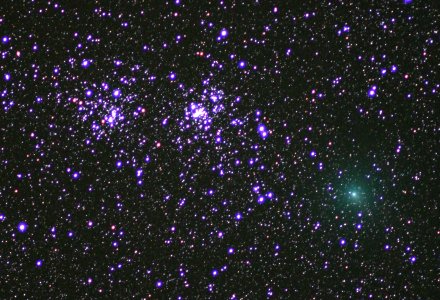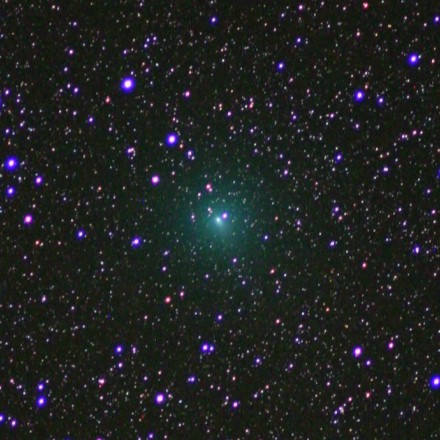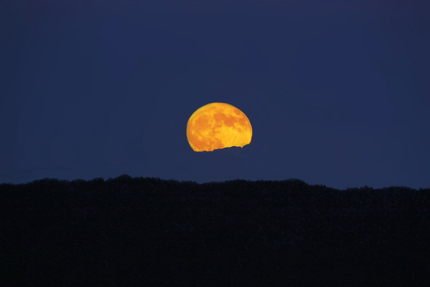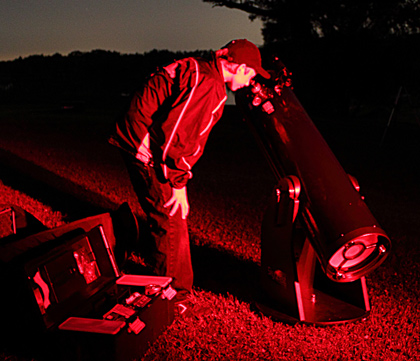Have you seen the recent emails claiming that on Aug 27, 2010, that Mars was going to be huge, larger than it’s ever been, as big as the Moon, and larger than anyone alive will ever see again? I hope you didn’t believe it. This is a recurring email that appears to be sent out every year about this time – and it’s a Hoax.

Being an active astronomy club and a site that many people come to look for info, it seemed appropriate that we post something about this hoax and hopefully put it to rest once and for all (perhaps I’m too optimistic).
First it may help to present some numbers to put things in perspective. Mars is about twice the size of the Moon and roughly half the size of the Earth, and orbits the Sun, like the Earth but at a greater distance. The Earth’s average orbit is about 92 million miles or 150 million kilometers from the Sun. Mars’ average distance from the Sun is 140 million miles or about 227 million km. So while the Earth take 365 days to orbit the Sun (1 Earth year), Mars takes 687 days (1 Mars year). On the other hand, the Moon orbits Earth at an average distance of 250,000 miles or 400,000 kilometres and doesn’t change much since it’s always orbiting the Earth.
Since the Earth takes less time to orbit the Sun than Mars (because it’s closer to the Sun), it means that every 26 months or so, we “catch up” to Mars and pass it. Think of watching a car race around an oval track. Cars on the inside lane more easily pass those on the outside lanes because they have less distance to travel. And cars that are on the same side of the track are closer to each other (so appear to be about the same size) than those on the opposite side of the track (they appear smaller in the distance). This race track analogy will come into play again later.
When we are on the same side of the Sun (same side of the track), we are at the closest point between the 2 planets, what astronomers call Opposition. Earth’s orbit is fairly circular (but not exactly) but Mars’ is much more eccentric (more elliptical or oval than Earth’s orbit). So sometimes at closest approach, we can be as close as about 55 million kilometers or more than 80 million km apart. (When Mars is on the opposite side of the “track” then obviously it’s even further away). Now keep this in mind. The closest Mars can get is about 55 MILLION kilometers, whereas the Moon is about 400,000 km away. That’s more than 130 times further. And even though Mars may be twice the size of the Moon, it can never look as big as the Moon. Consider a dime and a quarter. A quarter is about roughly twice the size of a dime. If you place a dime 5 feet from you and place the quarter 675 feet (130 times) away, the quarter isn’t going to look the same size. In fact you’re going to have a tough time seeing the quarter. For Mars to appear the same size as the Moon, it would have to get within about 750,000 km, and it can never get any where “close” to that distance from the Earth.
Now in these emails, which actually started back in 2003, and have now become an annual event, were very loosely based on some facts. On Aug 27, 2003, Mars did get closer to Earth than it has been in at least 5000 years, about 56 million km from Earth at its closest. The first emails came out then telling people that Mars would appear as large as the Moon. From the numbers above we know this can never happen. Mars was impressive through a telescope, but it didn’t get as big as the Moon.
We had a break in 2004 when it appears the emails didn’t circulate (or at least not widely). But then they appeared again in 2005 when Mars was going to be moderately close (astronomically speaking) in Oct of that year (remember we catch up every 26 months). The fact that they used the same Aug 27th date instead of Oct didn’t seem to bother the originators of the email. But in 2005 Earth didn’t get any closer than about 72 million km. Certainly a lot further than 56 million km we experienced in 2003.
For some reason, since then, these emails have re-appeared every year, regardless of whether we are getting to close approach of Mars (opposition) or not. In fact, right now, Mars is almost to the far side of the Sun from us, about 315 million km away – not even close. We had hit our closest approach back in Jan 2010 – quite a long time ago, and it won’t be until Mar 2012 when we get moderately close again. We won’t get as close as we did in 2003 for many years. I think in 2018 we’ll get almost as close as we did in 2003 – but “almost” in this case is about 60 million km.
In later years the emails have taken slightly different forms and some have had minor corrections or additions. For instance, some of them indicate in small print somewhere that using a telescope with 75 times magnification, then Mars will look as big as the Moon, since the apparent size of Mars in 2003 was about 75 times smaller than the Moon. Sadly they don’t make that obvious. I guess it takes away from some of the “WOW factor”.
Why do they keep sending these emails? I don’t know. No one is making money or “phishing” for your email address like some viruses do. So there doesn’t appear to be anything malicious. But when you consider that they are spreading misinformation and causing people to believe in things that aren’t true, then that’s a true disservice. Sadly there is a lot of bad info on the internet, many times made to look factual. In fact one could make that claim about this post. The best way to deal with this is to arm yourself with the facts. Check out many sources, especially the main-stream scientific sources for factual information. So I’m providing some links below to help you research this subject or to get more information.
This link is for Snopes which talks about modern folklore and various stories, identifying which are true and which are false. This particular link is for one of the entries over the years for this False claim.
Mars Hoax
This is a recent NASA article talking about the hoax.
NASA
Bad Astronomy, which I have referred to several times in the past, has a lot of articles and blogs postings about various hoaxes including this one. Many of the blog postings contain additional references and resources. Some of them can be found HERE and HERE.
And Universe Today has a good article from 2007, but still relevant, debunking this misinformation at Mars Hoax
You’ll notice that most of these references are old. That’s because this hoax keeps reappearing and scientists keep trying to correct it, and yet it keeps coming back each year.
I encourage you to read these articles and seek out others. And of course, when you see these emails in the future, and they inevitably will re-appear again next year, please don’t forward them on to your friends. Let’s put an end to this nonsense.







